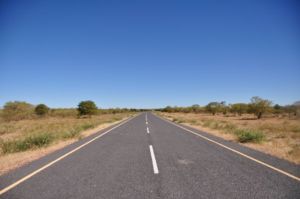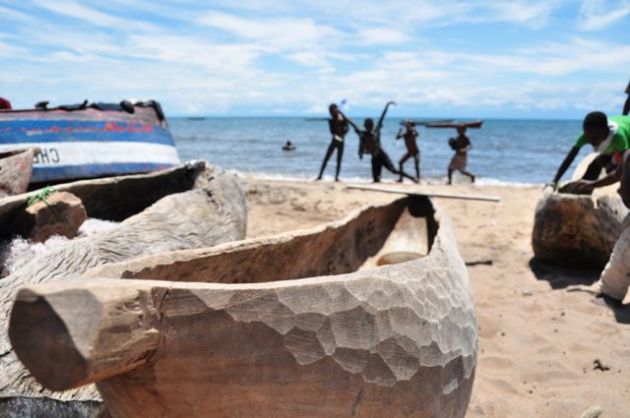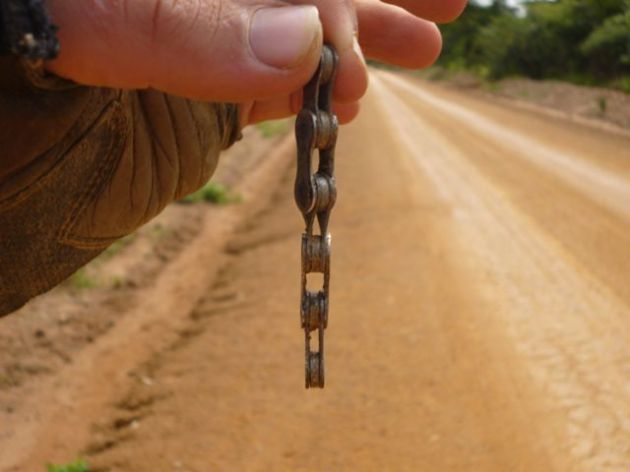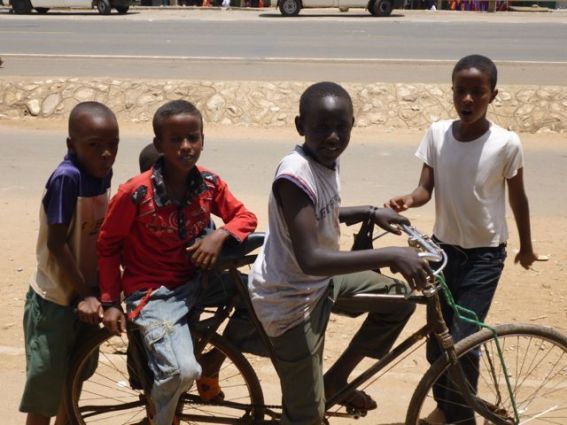http://tourdafrique.com/2013/04/botswana-the-elephant-highway/
It’s hot, it’s dry, it’s windy, it’s barren and every day it’s 150kms or more of dead straight, dead flat riding. The landscape is like riding through a cartoon with a 10 second illustration on repeat. Grass, shrubs, bramble, grass, tree, small tree, grass, shrubs and repeat. The mystery of what lies ahead is taken down to a crawling pace of anticipation as every slight curve in the road opens the view to the next 10kms of your day; shrubs, grass, trees, small tree, grass, shrubs. No villages, no market stands, no stalls, no children, no turns, no forks, no school yards, no mountains, no cafes, no households, no farms, nothing. Take away all the noise and activity, take away everything that was once a challenge and we are faced now with an even bigger one; emptiness.
Completing 800kms in 5 days of riding is more of a meditation. With some riders spending upwards of 10 hours on the bike there is more time to think than the brain would like to deal with. Whether it’s a conversation aloud with your riding partner or a conversation with yourself during the hours upon hours on the road, all the basics have long been covered. What to do after the tour, what you’ll miss about life here, how you feel about cycling at this point, what you’re really missing about life at home, what your next bike tour will be, next bike, past adventures, what new job you hope to get, new career move, new city, all about your family, your friends, you favorite beer, the food you miss and tales of your misspent youth are all topics long expired in the first few 100 kms in this 1,000+km traverse of the flat lands.
So where does the mind go now? With headwinds blasting in your face on day 3 of 170kms, no end in sight and no water left, you dig. You dig down past the point of giving up. Why? Because there is no option. It’s a place where many of us never go when we are at home with creature comforts at our beck and call. It’s a place that even if most of us never visit again, we know is there, deep inside us, that little voice that just says “keep on moving, just keep moving forward”.

Travelling 12,000kms by bike sounds fantastic and intriguing but the reality is far too abstract a number for any non-cyclist to really imagine. It is at this point in the tour where that number feels all too real and is accounted for more closely than at any other point. An expedition of this caliber is not for the faint of heart nor is it reserved for the ultra-athletes amongst us. Those who choose to join us for this mad adventure have simply had a serious conversation with themselves. A conversation about pushing beyond the point of reason and beyond what you ever thought was possible and discovering that if you just keep moving, and keep moving forward, one day…you’ll get there.







